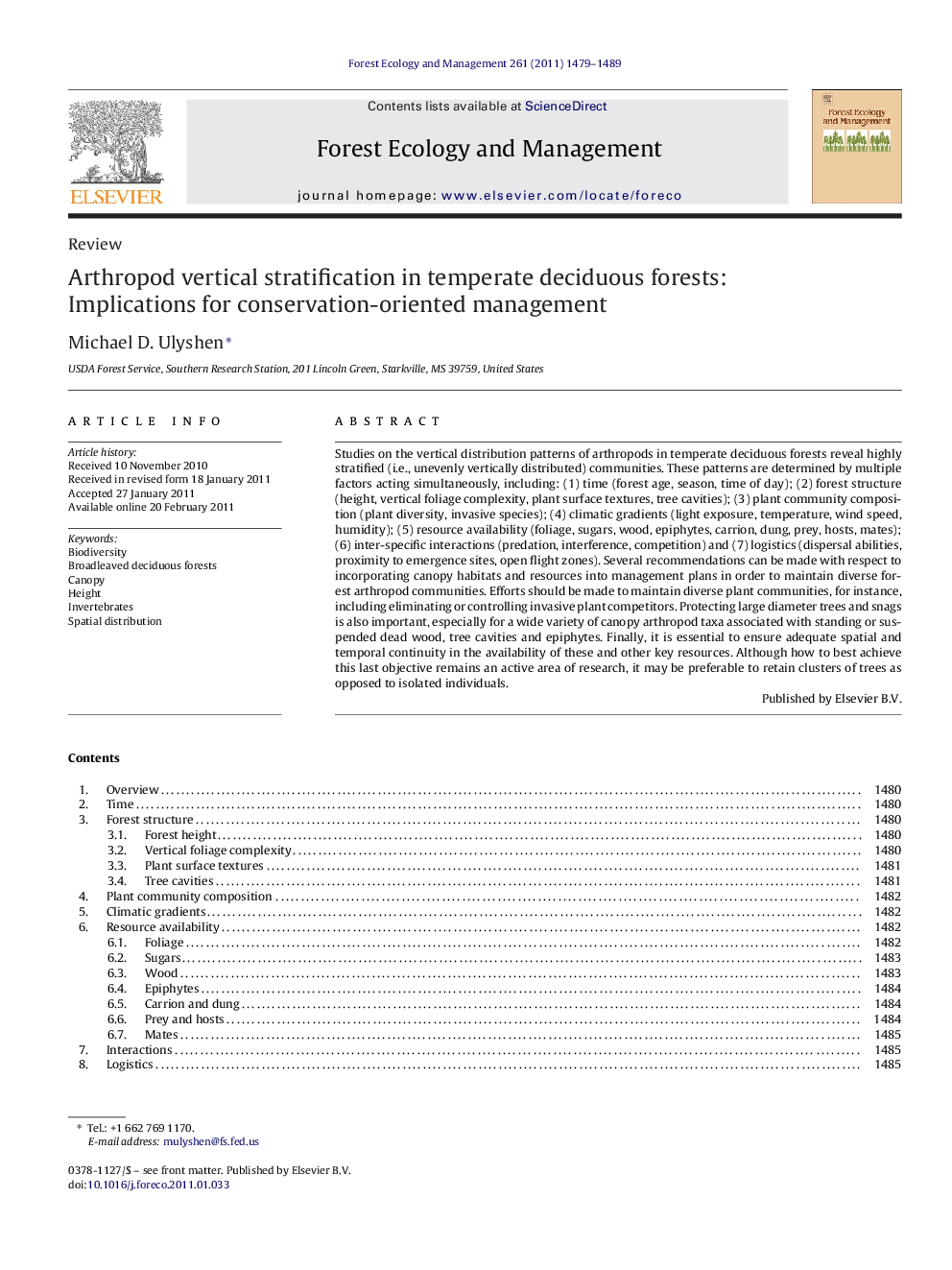| کد مقاله | کد نشریه | سال انتشار | مقاله انگلیسی | نسخه تمام متن |
|---|---|---|---|---|
| 87982 | 159275 | 2011 | 11 صفحه PDF | دانلود رایگان |

Studies on the vertical distribution patterns of arthropods in temperate deciduous forests reveal highly stratified (i.e., unevenly vertically distributed) communities. These patterns are determined by multiple factors acting simultaneously, including: (1) time (forest age, season, time of day); (2) forest structure (height, vertical foliage complexity, plant surface textures, tree cavities); (3) plant community composition (plant diversity, invasive species); (4) climatic gradients (light exposure, temperature, wind speed, humidity); (5) resource availability (foliage, sugars, wood, epiphytes, carrion, dung, prey, hosts, mates); (6) inter-specific interactions (predation, interference, competition) and (7) logistics (dispersal abilities, proximity to emergence sites, open flight zones). Several recommendations can be made with respect to incorporating canopy habitats and resources into management plans in order to maintain diverse forest arthropod communities. Efforts should be made to maintain diverse plant communities, for instance, including eliminating or controlling invasive plant competitors. Protecting large diameter trees and snags is also important, especially for a wide variety of canopy arthropod taxa associated with standing or suspended dead wood, tree cavities and epiphytes. Finally, it is essential to ensure adequate spatial and temporal continuity in the availability of these and other key resources. Although how to best achieve this last objective remains an active area of research, it may be preferable to retain clusters of trees as opposed to isolated individuals.
Research highlights
► This article reviews literature on the vertical distribution patterns of arthropods in temperate deciduous forests.
► Contrary to popular opinion, these communities are highly stratified and a large proportion of species are dependent on canopy habitats or resources.
► Implications for conservation-oriented management are discussed.
Journal: Forest Ecology and Management - Volume 261, Issue 9, 1 May 2011, Pages 1479–1489